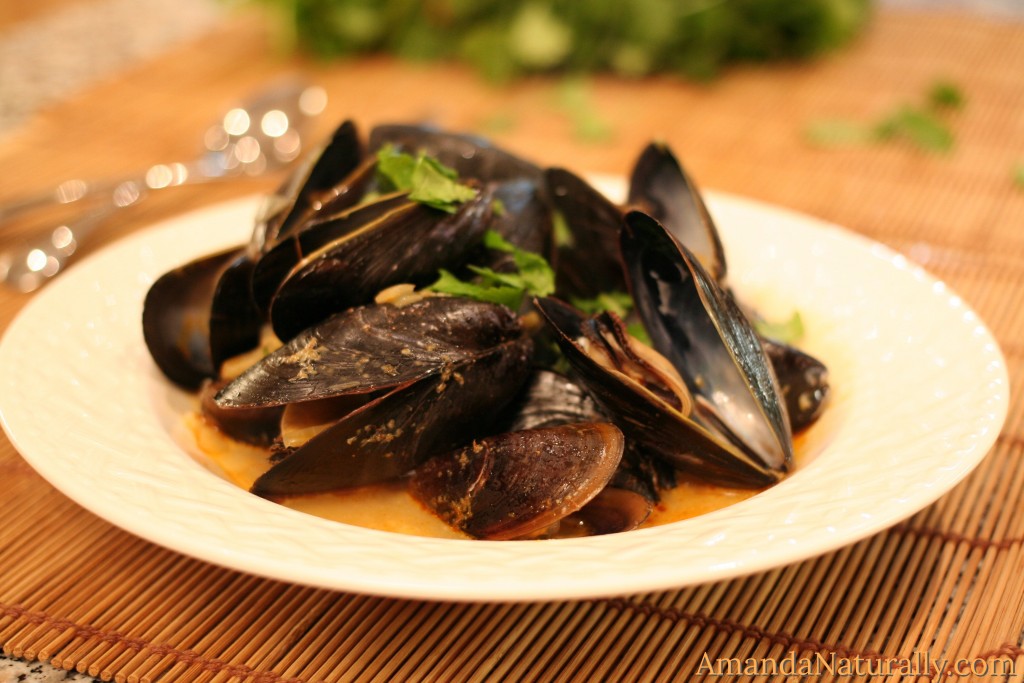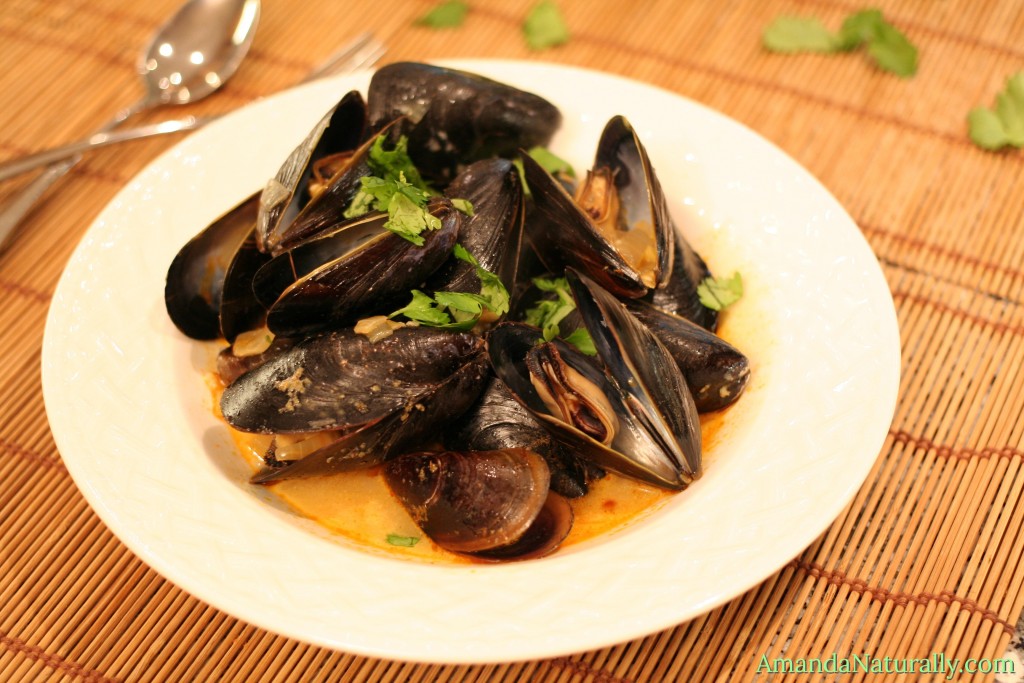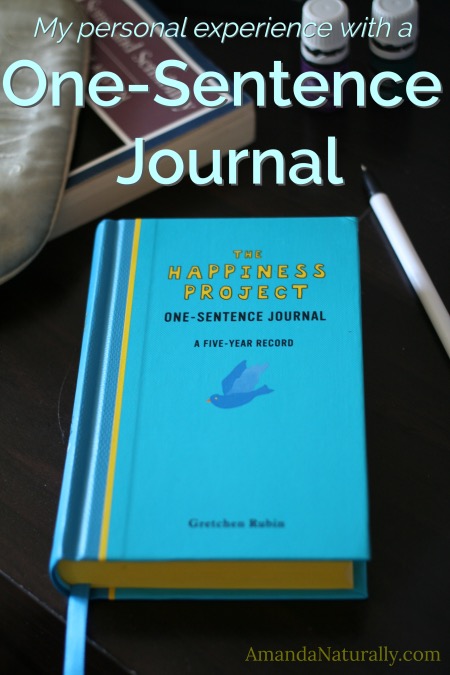 One of the promises I made to myself as I was recovering from Adrenal Fatigue was to focus on the positive whenever possible. Since I am predisposed (both through personality and genetics) to be susceptible to stress, the habits I formed during my recovery have become part of my every day life, in an effort to not end up in the same position I was 8 months ago.
One of the promises I made to myself as I was recovering from Adrenal Fatigue was to focus on the positive whenever possible. Since I am predisposed (both through personality and genetics) to be susceptible to stress, the habits I formed during my recovery have become part of my every day life, in an effort to not end up in the same position I was 8 months ago.
Being positive is a natural tendency for me (save for a short period of time in my life when I was dating a positivity-vampire), however when life gets stressful, you can fall into a negativity pit without even realizing and it can be a struggle to climb out. In an effort to not let that happen, I continue to make little changes to my life and add small habits that contribute to positivity and happiness.
One of my recent new habits was to subscribe to the podcast Happier with Gretchen Rubin. A few years ago I read Rubin’s first book – The Happiness Project – which was a wonderful, systematic discussion of her personal journey to becoming happier. There were a couple of key takeaways from that book that I’ve held on to, my favourite being to always Be Gretchen (or in my case, Be Amanda) which means just because most other people enjoy something doesn’t mean that I have to. So when I heard that the author had begun a weekly podcast, I instantly subscribed.
I love love love podcasts! My husband can attest to that since most of our conversations these days begin with me saying “today on a podcast….”. I listen to them while walking the dog, doing laundry, cleaning up around the house and most importantly (from a happiness perspective) driving. I never worry about traffic anymore, because being in the car is now sacred me time, where I get to listen to whichever podcast suits my fancy that day!
On one of her earlier podcasts, she spoke about the power of a One-Sentence Journal, which instantly piqued my interest. I love the idea of journaling, but in practice, it feels very overwhelming. The whole idea of logging a major entry every day is enough to put me off the concept altogether. However, the concept of writing down one sentence seems totally manageable. So I instantly went to amazon and bought her One-Sentence Journal: A Five-Year Record.
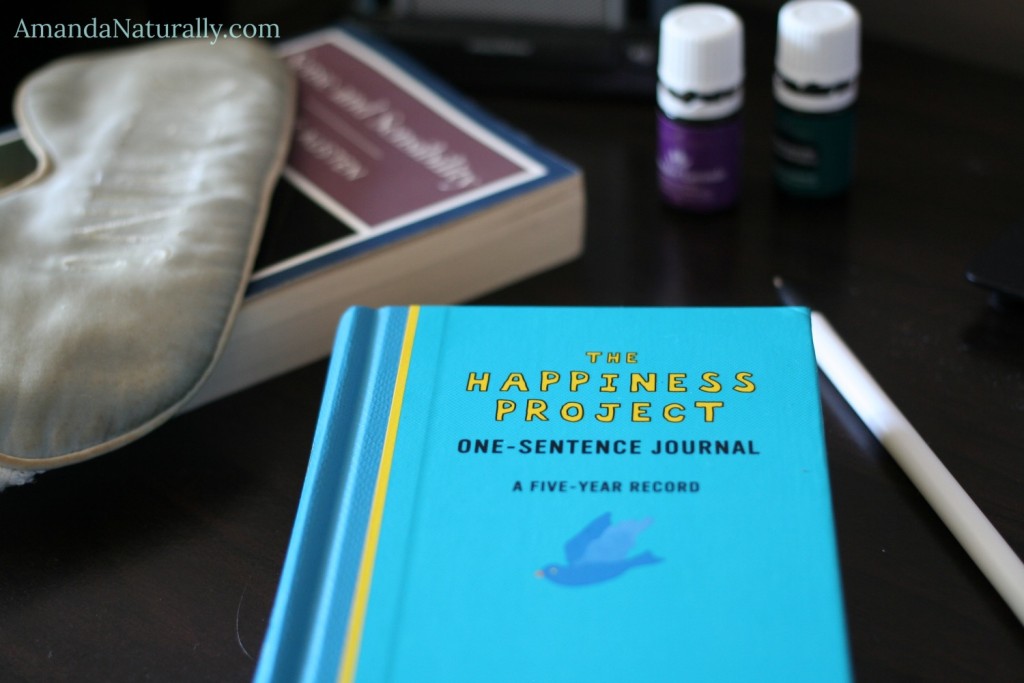
What I liked about her book is that each page is reserved for one day, but it contains 5 years worth spaces to fill in. So in theory, on this day next year, I’ll be able to reflect back on what happened today! The idea is that by writing down a memory from today, you will (a) be more likely to remember it simply through the process of acknowledging it and writing it down and (b) you will have a hard copy of your real life everything from major milestones to simple moments.
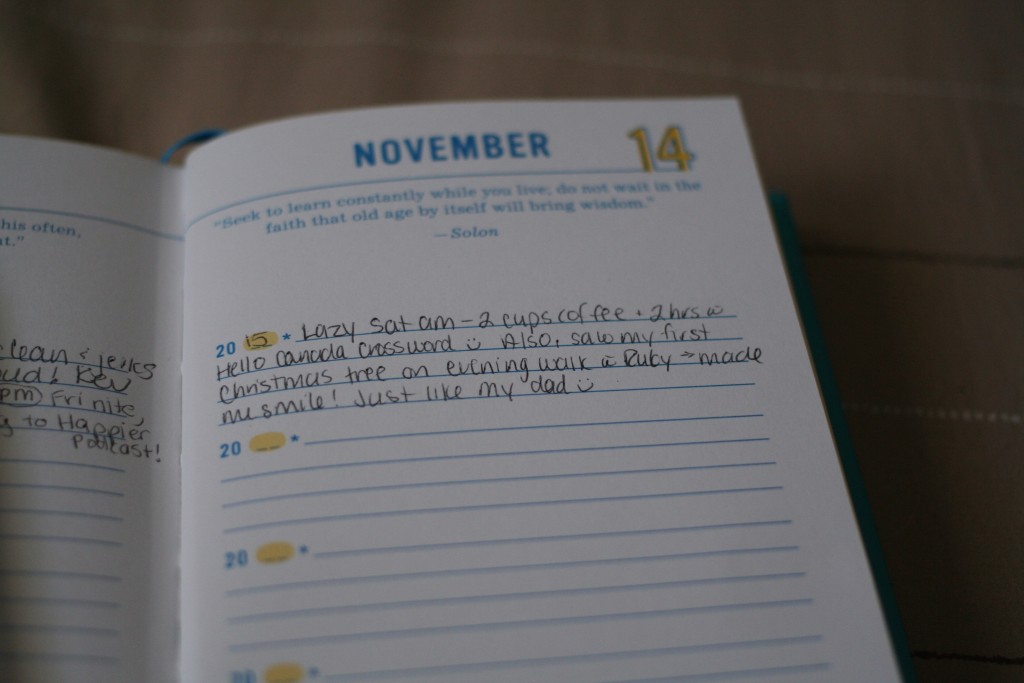
So I’ve been one-sentence journaling for a few weeks now and here’s what I’ve noticed:
- It’s easy to remember to do – I leave the journal beside my bed and quickly jot down a memory from the day before I go to bed.
- The act of writing down something that makes me happy before bed, is a great way to finish the day. I am routinely turning out the light with a smile on my face.
- This is something I did not expect to happen…all day I am looking at the different moments, aspects, routines – all seemingly mundane and unimportant – as possible journal entries! I seem to be looking at my life with happiness goggles on! Every minute is an opportunity to be happy and I am seeking out all the happiness!!
- There are no rules, and that’s a good thing! Some days there are big ticket items like a wonderful dinner with friends, but other days are as simple as being grateful for enjoying an extra cup of coffee on a Monday morning with my husband or watching the first snowfall of the season.
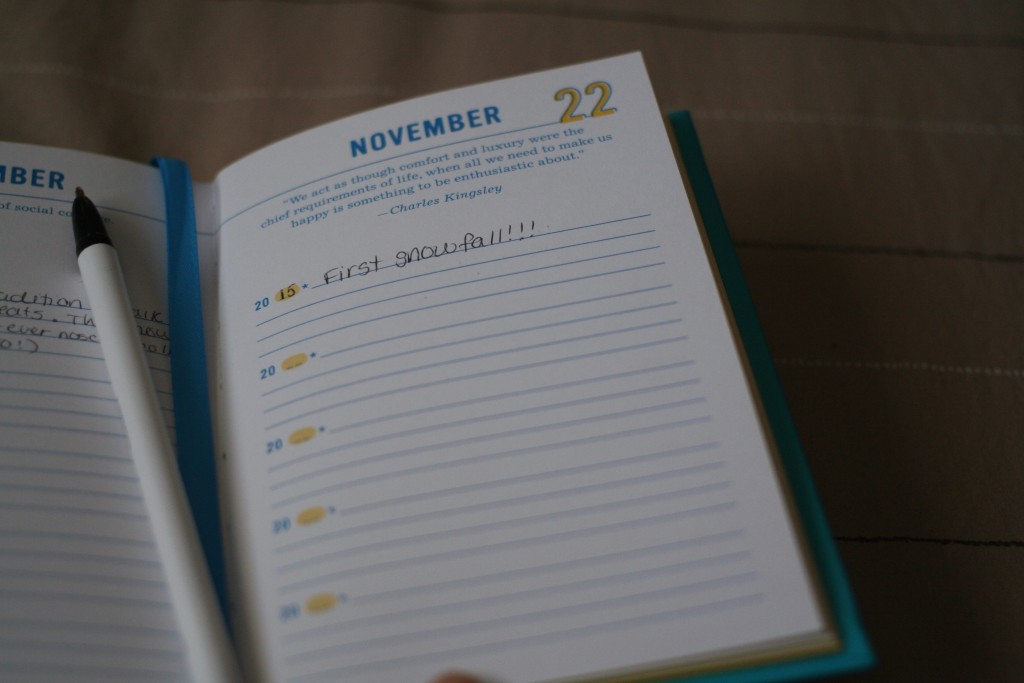
As of right now (only a few weeks in), I can see myself doing this religiously. If for nothing else than the excitement of coming full circle a year from now and seeing what I was writing about, and how things have changed. But most importantly, I hope this new habit allows me to keep these happiness-coloured glasses I have become so fond of!
So tell me, do you journal? How does it work for you? Any tips to share?
Do you listen to podcasts? What are some of your favourites? Share below!
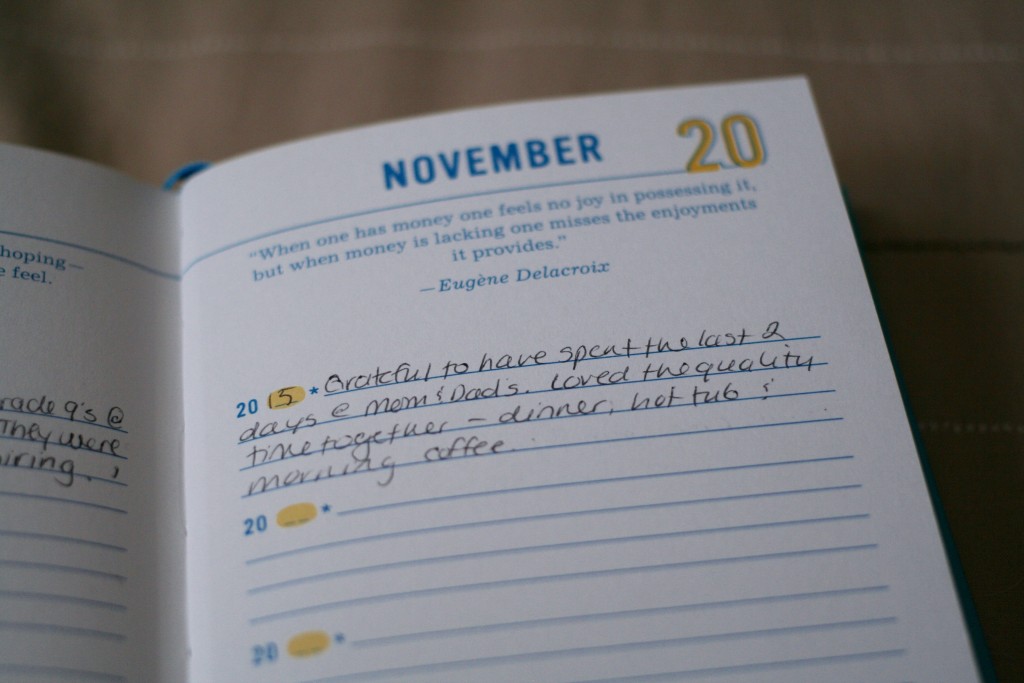

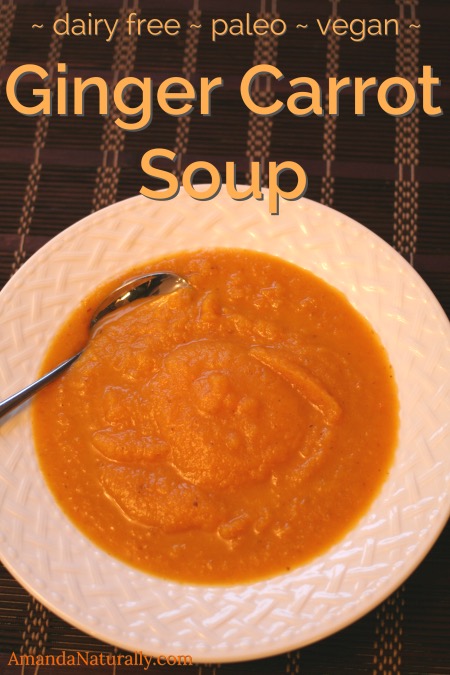 This past weekend we harvested all of the carrots from our garden. We were shocked to see how many there were! We only planted 1 row, but ended up with bowls and bowls of carrots. So in order to use them all while they’re fresh and most tasty, I quickly turned them into my favourite carrot soup. I quadrupled the recipe below and used my 2 largest pots, and still couldn’t get all of the carrots in! I froze most of the soup in both single serving and larger jars that contain 2-3 servings. I always try to make larger quantities of a freezable recipe, for those days when there are no leftovers for lunch, or when life gets crazy and there’s nothing for dinner!
This past weekend we harvested all of the carrots from our garden. We were shocked to see how many there were! We only planted 1 row, but ended up with bowls and bowls of carrots. So in order to use them all while they’re fresh and most tasty, I quickly turned them into my favourite carrot soup. I quadrupled the recipe below and used my 2 largest pots, and still couldn’t get all of the carrots in! I froze most of the soup in both single serving and larger jars that contain 2-3 servings. I always try to make larger quantities of a freezable recipe, for those days when there are no leftovers for lunch, or when life gets crazy and there’s nothing for dinner!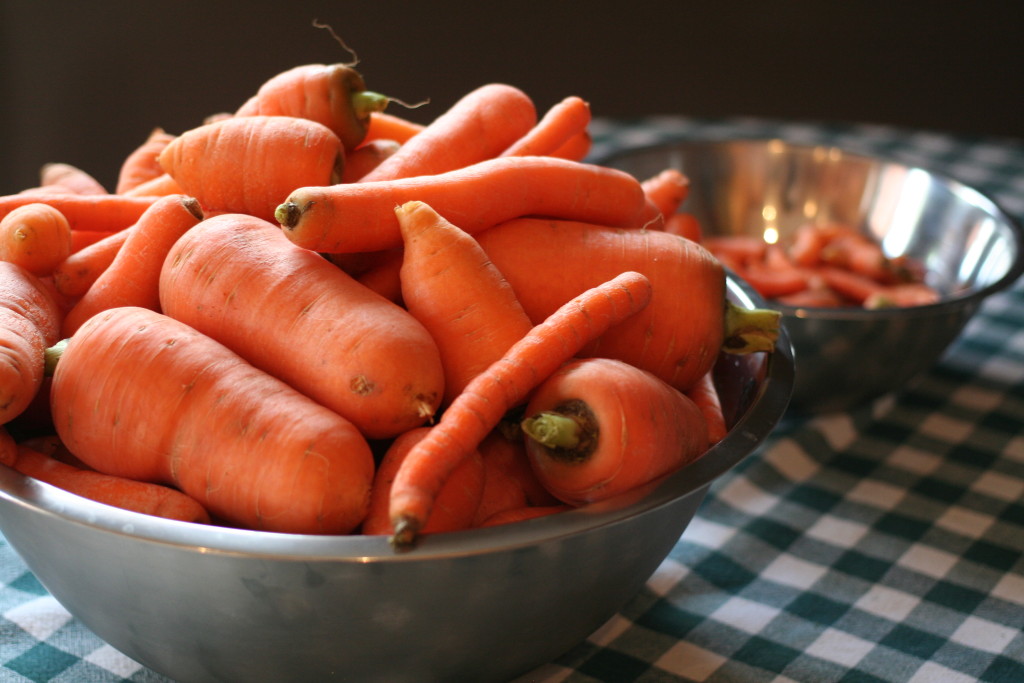
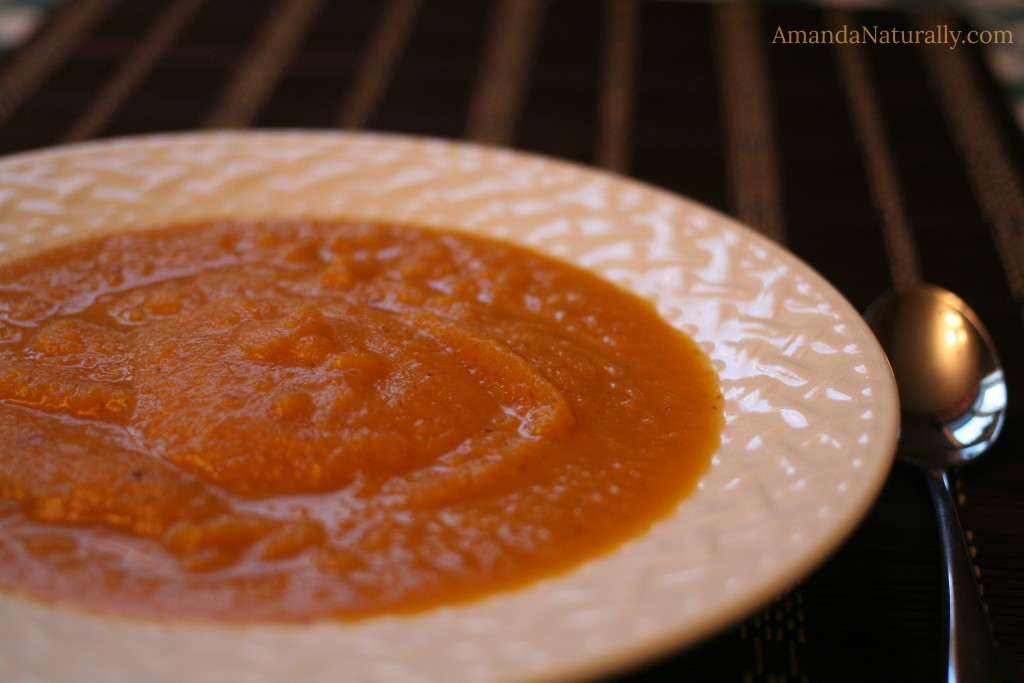
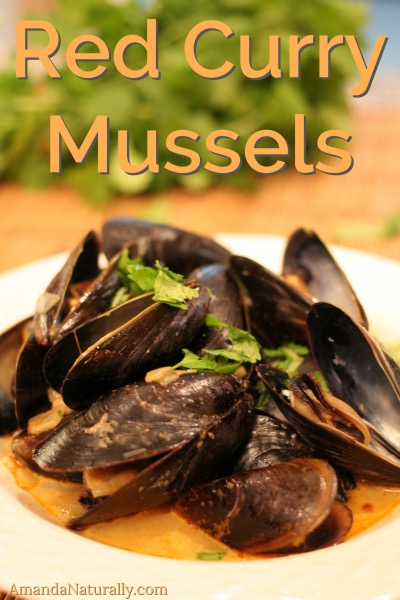 Mussels have been a restaurant go-to of mine for a long time now! Living with food allergies can be challenging when it comes to eating out – especially since so many people love Italian (read: wheat and cheese). However most of the time there’s a mussel dish on the menu, and usually it’s in a simple tomato or wine sauce (although my favourite is thai curry mussels – hence the recipe below!). Add a side salad, or a side of fries if you’re into that (who isn’t?!), and boom – a naturally grain & dairy free meal. Bonus is they’re usually on the appetizer section of the menu so end up being much more reasonably priced than the entrees!
Mussels have been a restaurant go-to of mine for a long time now! Living with food allergies can be challenging when it comes to eating out – especially since so many people love Italian (read: wheat and cheese). However most of the time there’s a mussel dish on the menu, and usually it’s in a simple tomato or wine sauce (although my favourite is thai curry mussels – hence the recipe below!). Add a side salad, or a side of fries if you’re into that (who isn’t?!), and boom – a naturally grain & dairy free meal. Bonus is they’re usually on the appetizer section of the menu so end up being much more reasonably priced than the entrees!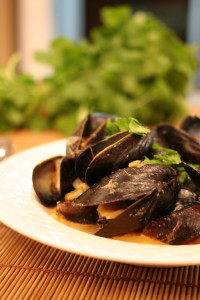 Ingredients
Ingredients




